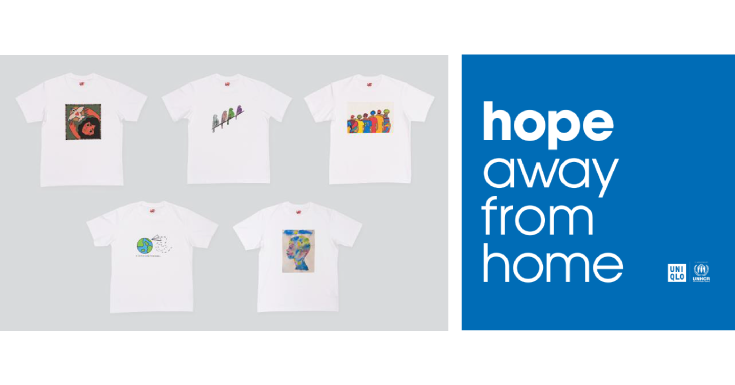Baby Nutrition Guide: 0-36 Months
It is without a doubt every parent’s dream is to keep their little one as healthy as possible and to see their bundle of joy experiencing optimum growth and development. Nutrition plays an integral role in keeping your precious baby healthy and free from diseases. A strong, healthy body for your child is possible through good diet and proper nutrition and here, we show you how to obtain it.
Table of Contents
For a young infant up to 6 months old
Breastfeeding should ideally be the only food a baby should consume for the first six months of life. However, babies who are breastfed should get a vitamin D supplement of 10 micrograms or 400 international units (IU) each day. This will prevent any vitamin D deficiency. If your baby is not breastfed, or is only partially breastfed, commercial infant formulas are an alternative to breast milk. Non-breastfed infants do not require a vitamin D supplement because the commercial infant formula contains vitamin D.
For older infants up to 12 months old
Your baby can be breastfed for up to two years or for as long as your baby and you are comfortable with it. From the time your baby hits the 6-month mark, besides breast milk, it will be time to begin adding solid foods. Formula-fed infants should also be introduced to solid foods at this time.
Start with foods that contain iron to support your baby’s growth and development. Iron-rich foods include beef, lamb, poultry, fish, eggs, tofu, and legumes such as beans and lentils. Iron-fortified infant cereal is also a common first food. Gradually increase the number of times a day that you offer solid foods.
You can also try offering your baby a range of foods from your family meals, as long as they’re nutritious. Let your little one discover different textures and experiment with self-feeding. Finger foods are also a good start, so offer pieces of soft-cooked vegetables, soft fruit such as banana, bread crusts and toast.
If you are making the transition to cow’s milk as your child’s main milk source, wait until your baby is between 9 and 12 months old. Start with homogenized cow’s milk (3.25% M.F.). If you are going to make fortified soy beverage your child’s main milk source, wait until they are two years of age. Rice or nut beverages should not be used as your child’s main milk source.
Between 12 to 24 months
Breastfeeding can continue if your child and you wish to but by 12 months, your child needs a variety of foods from the food groups. It will help if you establish a schedule of regular meals and snacks for him or her.
Higher-fat, nutritious foods are an important source of energy for your child. Examples include breast milk, homogenized cow’s milk (3.25% M.F.), cheese, avocado, nut butters, and some fish such as salmon or trout. Eat together as a family as often as you can. Also be a role model and try new, nutritious foods yourself.
Limit fruit juice and do not offer sweetened beverages. If your child seems thirsty, offer water.
Menus for older infants and young children
These menus are only a guide. Offer your baby nutritious foods from your family meal and eat together as a family as often as you can. Let your baby decide how much to eat from the foods offered.
What you can offer a 7-month old infant
Early morning and on cue at any time (when your baby is hungry)
Breastfeeding
Morning
Breastfeeding
Infant cereal
Mashed bananas or other soft fruit
Snack
Whole grain toast, cut into small pieces
Midday
Breast milk
Iron-fortified infant cereal
Hard-boiled egg, mashed
Cooked and mashed sweet potato or other vegetable
Snack
Organic cookies or rusks
Early evening/dinner
Breast milk
Ground or finely minced chicken or other meat
Cooked and mashed broccoli or other vegetable
In between meals
Breast milk
What you can offer an 11-month old infant
Morning
Breast milk
Iron-fortified infant cereal
Chopped berries or other fruit
Snack
Dry cereal snack
Blueberries
Midday
Breast milk
Sweet potato, mashed
Omelet
Snack
Chopped, hard-boiled egg
Whole grain bread, cut into strips
Dinner
Breast milk
Ground beef cooked with diced tomatoes and macaroni
Unsweetened canned fruit
In between meals
Breast milk
What you can offer a 17-month old child
Continue breastfeeding as long as you and your child both want to.
Breakfast options
Whole grain toast with soft margarine
Scrambled egg
Sliced banana
Breast milk or homogenized cow’s milk (3.25% M.F.)
Snack options
Pancake with grated cheese
Soft pear, sliced
Lunch
Cooked quinoa
Chopped chicken
Grated vegetables
Chopped mango
Breast milk or homogenized cow’s milk (3.25% M.F.)
Snack
Dry cereal
Sliced fresh fruit
Dinner
Poached fillet of sole, deboned
Roasted potato, chopped
Steamed broccoli and cauliflower, chopped
Breast milk or homogenized cow’s milk (3.25% M.F.)
Supper options
Whole wheat bread with soft margarine
Sliced strawberries
Breast milk or homogenized cow’s milk (3.25% M.F.)
Nutrition for vegetarian toddlers
Breakfast
Iron-fortified baby cereal
Sliced banana
Breast milk or homogenized cow’s milk (3.25% M.F.)
Snack
Whole grain crackers with grated cheese
Sliced strawberries
Lunch
Naan bread, cut into strips, spread thinly with hummus
Cooked green beans and carrots, chopped
Chopped fruit
Breast milk or homogenized cow’s milk (3.25% M.F.)
Snack
Cottage cheese
Chopped fruits
Dinner
Whole wheat couscous
Cooked lentils/lentil cakes
Cooked, diced, zucchini
Diced tomatoes
Fruit cocktail in juice
Breast milk or homogenized cow’s milk (3.25% M.F.)
Supper
Whole grain muffin
Breast milk or homogenized cow’s milk (3.25% M.F.)
Food for thought
Overfeeding encourages children to override their inborn ability to eat when hungry and stop when full, which may encourage a pattern of overeating that leads to an unhealthy weight.
Introducing Flavors Early Through Breast Milk
Studies on breast milk and babies’ food preferences have shown that babies are more likely to enjoy the foods their mothers ate while breastfeeding over new foods they were never exposed to. According to Julie A Menella, Ph.D. a biopsychologist at the Monell Chemical Senses Center in Philadelphia, there is enough evidence to point to the fact that flavors from a mother’s diet are transmitted to her baby through breast milk. Babies can detect the flavors and, if they have experience with those flavors, they are going to be more accepting of the food. So, if you’re breastfeeding, start baby’s love of veggies early by piling some on your own plate.
Safe feeding tips
- Always supervise your child when eating.
- Make sure your child is sitting upright and is not distracted. Do not let your child eat while walking or running, or while sitting in a moving vehicle.
- Do not offer solid foods that are hard, small and round, or smooth and sticky. These foods can cause choking.
- Do not offer herbal teas, sports drinks or other drinks with caffeine or artificial sweeteners.
- Cook all meat, eggs, poultry, and fish well. Do not use products with raw eggs.
- Do not offer unpasteurized juices, milk or milk products.
Note: To prevent infant botulism, do not offer honey to a baby younger than 12 months.
Get a grip on food allergens
Introduce common food allergens one at a time. A food allergen can cause an allergic reaction in some children (like itchy skin, upset stomach or wheezing). Wait two days before introducing a new food. That way, if your baby develops a reaction, you’ll have a better idea of what food might have caused it.
When dealing with an erratic eater
Growth spurts, painful teething, and illnesses all contribute to picky eating. So does a general fascination with their surroundings and with their new-found abilities. Often enough, toddlers are more interested in learning a new word or making a run for it than eating. One thing’s for sure: toddlers eat when they are hungry.
Tip
When your little one makes a face at his or her first bite of spinach, don’t mimic that expression. Instead smile and encourage continued consumption, to make trying veggies a positive experience. With some luck, by the fourth or fifth exposure, baby would have learned to love it!
Solid blues
If your child seems disinterested in solids when you first offer them, be patient and wait a few days to give the food another try. Some children take more time than others to come around to eating from a spoon. While some are consistently poor eaters, most babies eat what they need to thrive.





















Leave a comment